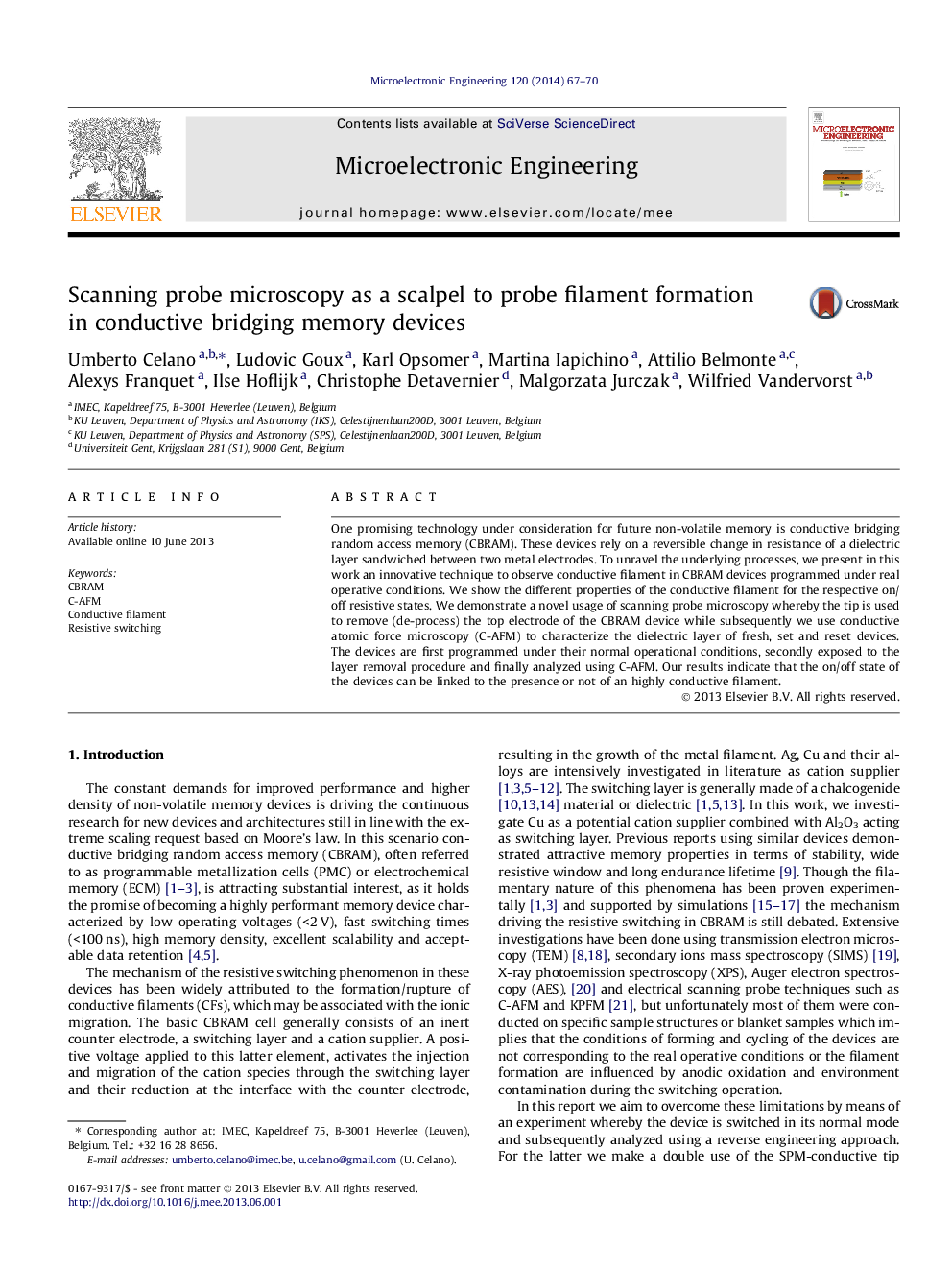| کد مقاله | کد نشریه | سال انتشار | مقاله انگلیسی | نسخه تمام متن |
|---|---|---|---|---|
| 541309 | 1450361 | 2014 | 4 صفحه PDF | دانلود رایگان |
• CBRAM devices are programmed and de-processed.
• Material removal techniques is developed using C-AFM.
• Fresh and reset devices do not present any highly conductive spots.
• Conductive filament is observed in the low resistive state device.
One promising technology under consideration for future non-volatile memory is conductive bridging random access memory (CBRAM). These devices rely on a reversible change in resistance of a dielectric layer sandwiched between two metal electrodes. To unravel the underlying processes, we present in this work an innovative technique to observe conductive filament in CBRAM devices programmed under real operative conditions. We show the different properties of the conductive filament for the respective on/off resistive states. We demonstrate a novel usage of scanning probe microscopy whereby the tip is used to remove (de-process) the top electrode of the CBRAM device while subsequently we use conductive atomic force microscopy (C-AFM) to characterize the dielectric layer of fresh, set and reset devices. The devices are first programmed under their normal operational conditions, secondly exposed to the layer removal procedure and finally analyzed using C-AFM. Our results indicate that the on/off state of the devices can be linked to the presence or not of an highly conductive filament.
Figure optionsDownload as PowerPoint slide
Journal: Microelectronic Engineering - Volume 120, 25 May 2014, Pages 67–70
